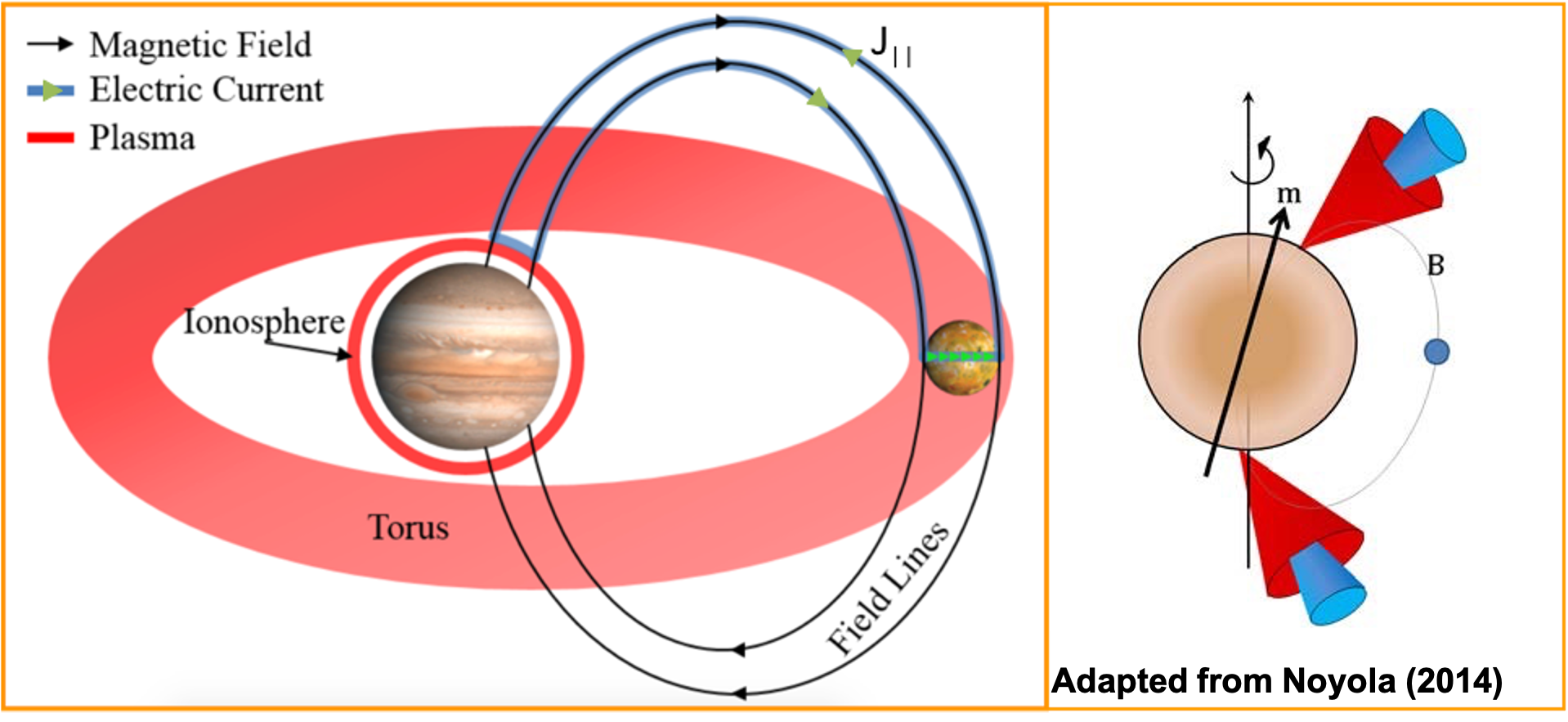Marialis Rosario-Franco
Astrophysics Ph.D. Candidate at UT Arlington
Gröte Reber Fellow at NRAO
Scientific Writer for Astrobitos
Astrophysics Ph.D. Candidate at UT Arlington
Gröte Reber Fellow at NRAO
Scientific Writer for Astrobitos
I'm interested in orbital stability and radio detection of exoplanets and exomoons. My numerical work with orbital stability aims to examine the potential for these systems to be directly detected by modern radio telescopes, which constitutes the observational aspect of my Ph.D. thesis. A list of publications and abstracts available at NASA/ADS.
Could a moon possess a moon itself? This configuration does not exist in the Solar System, although this may be possible in theory. A critical parameter for stability is how far from the host satellite can these submoons orbits (critical semi-major axis), which will depend on the eccentricity and inclination of its orbit.
Rosario-Franco et al. 2020We performed orbital integrations of the exomoon candidate Kepler 1625b-I. Assuming circular coplanar orbits, we found that the stability limit for an exomoon is ~40% the Hill radius of its host planet, and for a submoon is 33% the Hill Radius of its host satellite. Additionally, we explored the observational feasibility of detecting these sub-satellites and established detection thresholds using photometric, radial velocity, or direct imaging observations.
A repository with tools to determine the stability limit, or critical semimajor axis, of exomoons and submoons is available under SATSTAB.This project costitutes the first application of satellite radio-detection method, proposed by Noyola at al. (2015). The technique is based on a planet-moon interaction observed in the Jupiter-Io system, where Io-controlled decametric radio emissions are used to determine how the presence of exomoons around giant planets might be revealed through the same modulation mechanism.

We performed 325MHz observations of 3 nearby (~4.6pc) stellar systems performed with the Giant Metrewave Radio Telescope (GMRT), located in Pune, India. Analysis of this data set is ongoing.
The theory of planet-moon emission mechanisms favors lower frequencies. Currently, I'm leading the survey and analysis beam-formed observations using the Long Frequency Array (LWA). I presented an update on these observations at the 2020 LWA User's Meeting(45:15).
I've had the chance to participate in several efforts to foster equal opportunity such as performing research in Physics Education, mentoring, and outreach. Come back later for more details on these activities!
National Radio Astronomy Observatory Array Operations Center 1003 Lopezville Road Socorro, NM 87801
Office: +1-575-835-7111 Email:mrosario@nrao.edu